
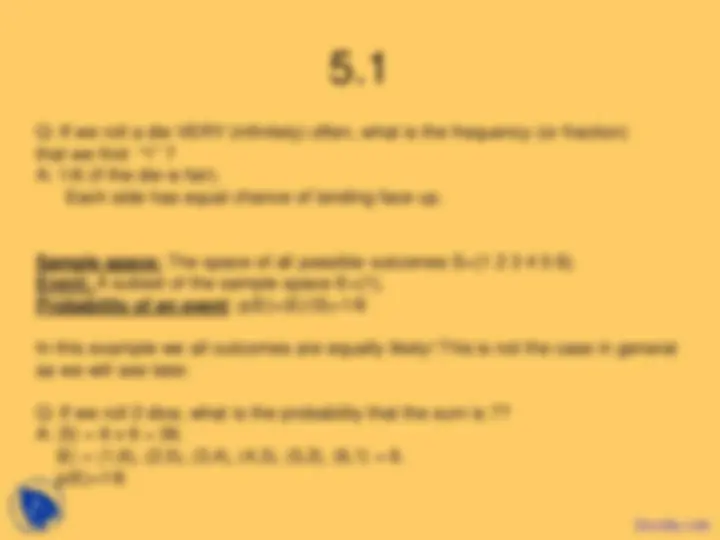
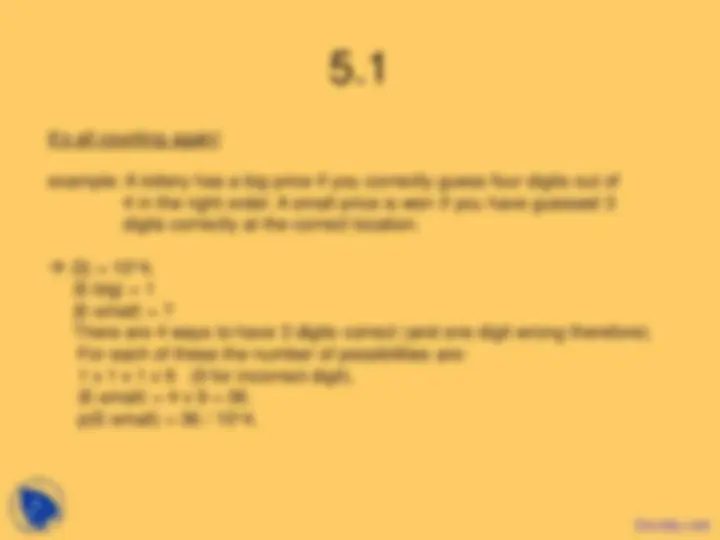
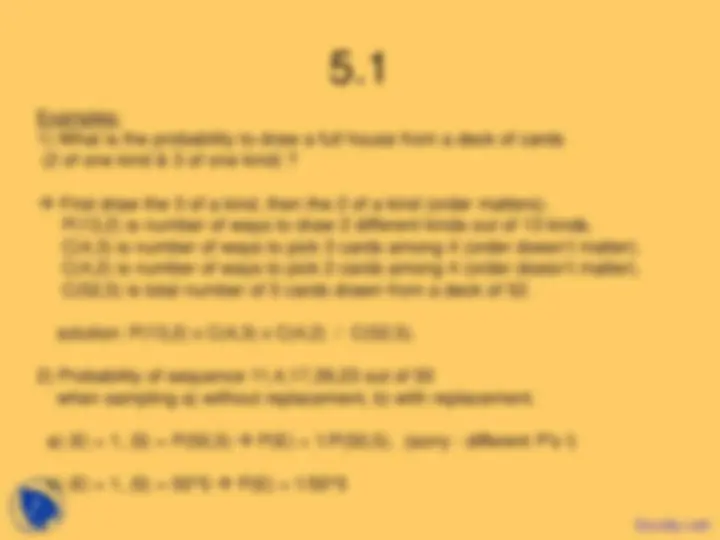
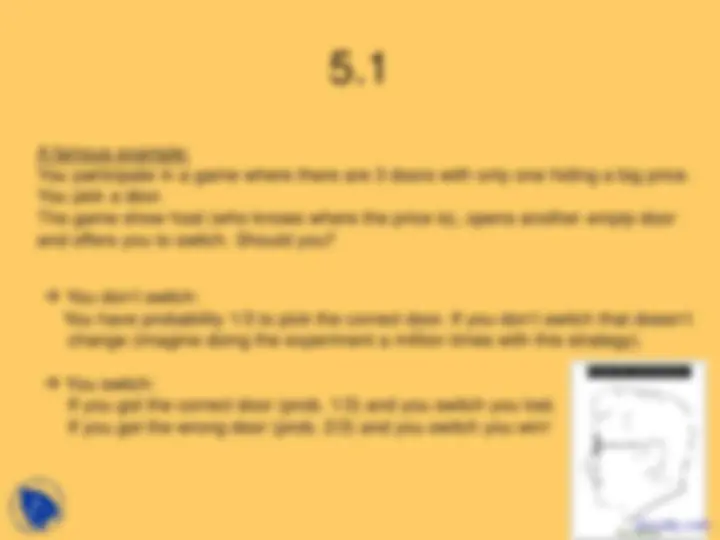
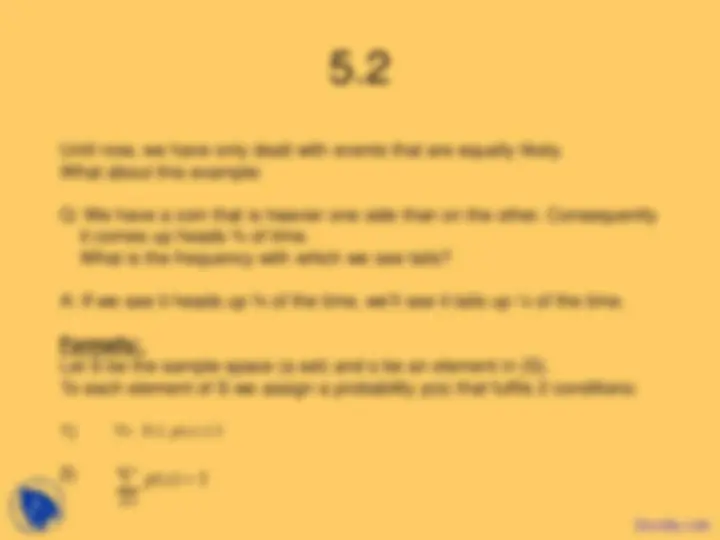
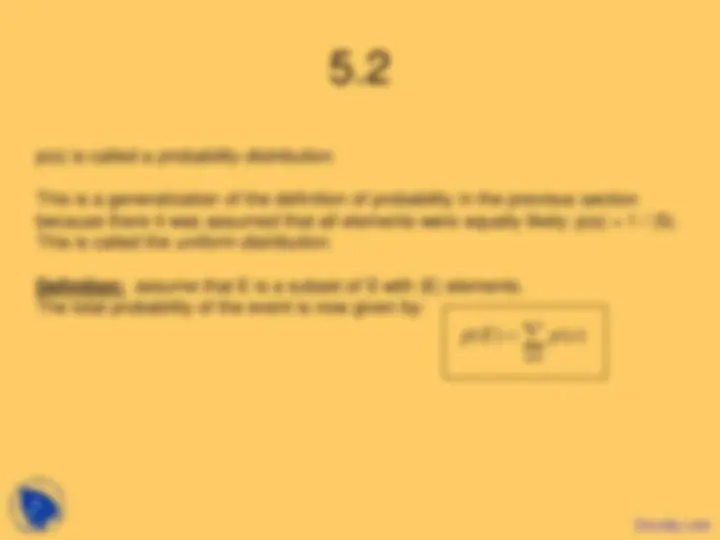
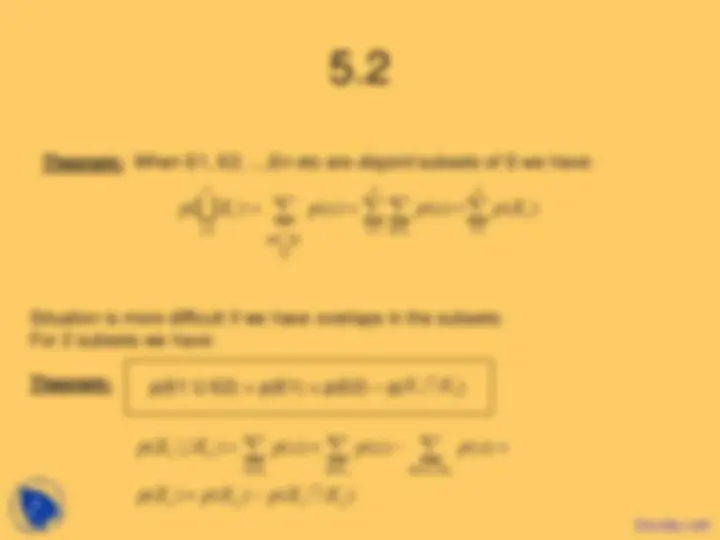
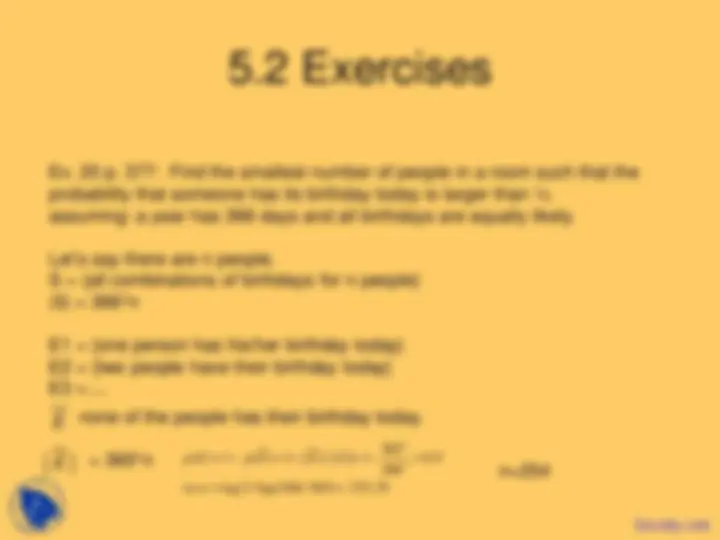
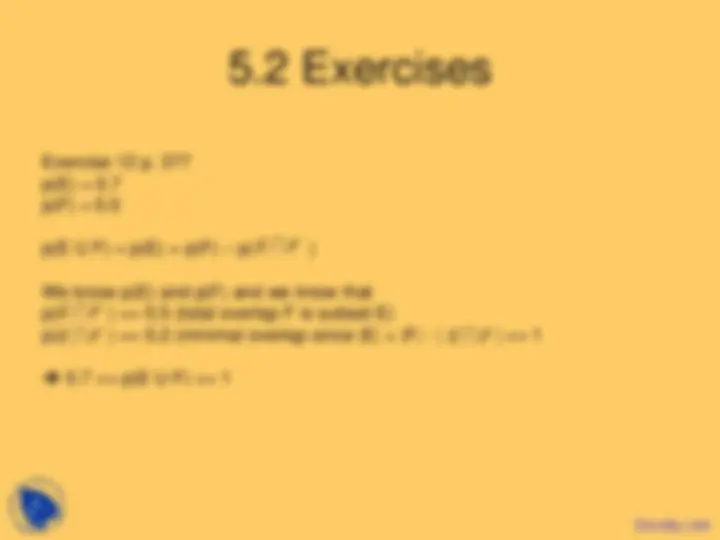


Study with the several resources on Docsity

Earn points by helping other students or get them with a premium plan


Prepare for your exams
Study with the several resources on Docsity

Earn points to download
Earn points by helping other students or get them with a premium plan
Community
Ask the community for help and clear up your study doubts
Discover the best universities in your country according to Docsity users
Free resources
Download our free guides on studying techniques, anxiety management strategies, and thesis advice from Docsity tutors
During the study of discrete mathematics, I found this course very informative and applicable.The main points in these lecture slides are:Discrete Probability, Probabilities Theory, Complexity of Algorithms, Applications in Error-Correcting Coding, Data Compression, Data Restoration, Medical Expert Systems, Search Engines, Context of Gambling
Typology: Slides
1 / 15

This page cannot be seen from the preview
Don't miss anything!










It’s all counting again!
example: A lottery has a big price if you correctly guess four digits out of 4 in the right order. A small price is won if you have guessed 3 digits correctly at the correct location.
|S| = 10^4. |E-big| = 1 |E-small| =? There are 4 ways to have 3 digits correct (and one digit wrong therefore). For each of these the number of possibilities are: 1 x 1 x 1 x 9 (9 for incorrect digit). |E-small| = 4 x 9 = 36. p(E-small) = 36 / 10^4.
Examples:
First draw the 3 of a kind, then the 2 of a kind (order matters). P(13,2) is number of ways to draw 2 different kinds out of 13 kinds. C(4,3) is number of ways to pick 3 cards among 4 (order doesn’t matter). C(4,2) is number of ways to pick 2 cards among 4 (order doesn’t matter). C(52,5) is total number of 5 cards drawn from a deck of 52.
solution: P(13,2) x C(4,3) x C(4,2) / C(52,5).
a) |E| = 1, |S| = P(50,5) P(E) = 1/P(50,5). (sorry - different P’s !)
b) |E| = 1, |S| = 50^5 P(E) = 1/50^
Set S1 is the set of all Irish citizens with blue eyes. Set S2 is the set of all Irish citizens with black hair. Set S3 is the set of all Irish citizens.
Q: If we meet a random Irish citizen in the streets of Dublin, what is the probability that he/she has blue eyes OR black hair?
A: Total number of possibilities |S3| = 10,000. Total “area covered” by S1 U S2 is: |E| = |S1 U S2| = |S1| + |S2| -
p(E) = p(S1 U S2) = |S1| + |S2| - / |S|
= p(S1) + p(S2) – p( )
| S 1 (^) S 2 |
A famous example: You participate in a game where there are 3 doors with only one hiding a big price. You pick a door. The game show host (who knows where the price is), opens another empty door and offers you to switch. Should you?
You don’t switch: You have probability 1/3 to pick the correct door. If you don’t switch that doesn’t change (imagine doing the experiment a million times with this strategy).
You switch: If you got the correct door (prob. 1/3) and you switch you lost. If you got the wrong door (prob. 2/3) and you switch you win!
p(s) is called a probability distribution.
This is a generalization of the definition of probability in the previous section because there it was assumed that all elements were equally likely: p(s) = 1 / |S|. This is called the uniform distribution.
Definition: assume that E is a subset of S with |E| elements. The total probability of the event is now given by:
s E
∈
= (^) ∑
Example: We have a loaded die such that 3 appears twice as often and the other side appear equally often. What is the probability of finding an odd number when we roll the die?
p(1)=p(2)=p(4)=p(5)=p(6) = q p(3) = 2q
s S
∈
∑ = ^ 5q + 2q.^ ^ q = 1/
odd outcomes: E = {1 3 5} p(E) = p(1)+p(2)+p(3) = 4/7.
Theorem: When E1, E2, ...,En etc are disjoint subsets of S we have:
1
1 1 1
( ) ( ) ( ) ( ) n (^) i i i
n n n i i i (^) s E i^ s^ E^ i
p E p s p s p E
=
= (^) ∈ =^ ∈^ =
= (^) ∑ = (^) ∑ ∑ =∑
Situation is more difficult if we have overlaps in the subsets: For 2 subsets we have:
1 2 1 2
1 2
1 2 1 2
( ) ( ) ( ) ( )
( ) ( ) ( )
s E s E s E E
p E E p s p s p s
p E p E p E E
∈ ∈ ∈
= + − =
∑ ∑ ∑
Ex. 20 p. 377: Find the smallest number of people in a room such that the probability that someone has its birthday today is larger than ½. assuming: a year has 366 days and all birthdays are equally likely.
Let’s say there are n people. S = {all combinations of birthdays for n people} |S| = 366^n
E1 = {one person has his/her birthday today} E2 = {two people have their birthday today} E3 =....
| E |^ = 365^n ( ) 1 ( ) 1 | | / | | 1 365 0. 366 log 2 / log(366 / 365) 253.
n p E p E E S n n
= − = − = − > ⇒ > =
n=